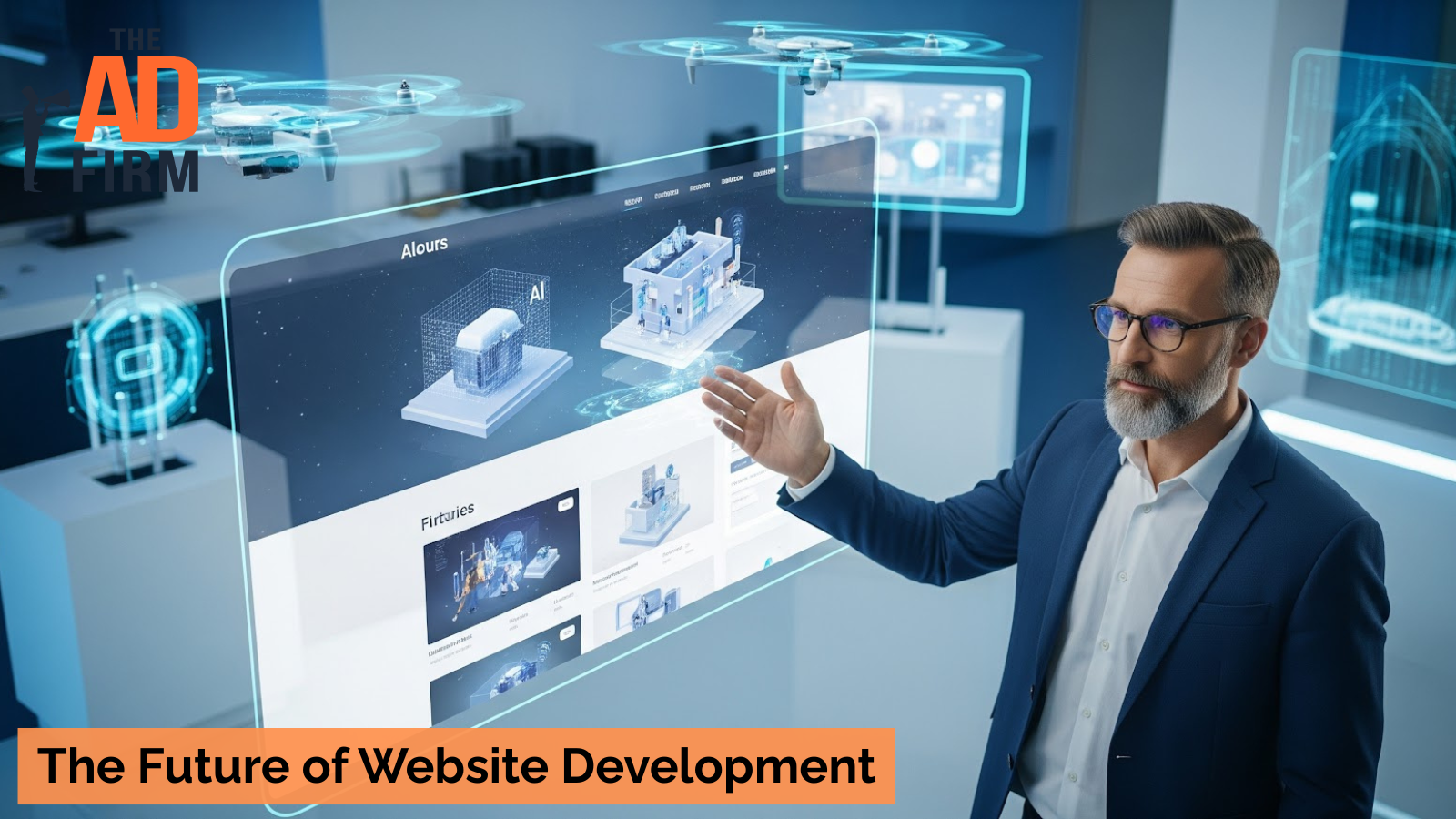Websites are no longer just static brochures; they’re evolving into more brilliant, faster, and more interactive tools for businesses. Whether you’re redesigning a site or launching your first, modern web design now plays a major role in how customers perceive and interact with your brand.
This article explains the most important trends shaping website development, in plain terms, and why they matter for you.
Why Pay Attention to Web Development Trends?
Your website is often the first interaction someone has with your business, and first impressions happen in seconds. An outdated or clunky site can make your brand look behind the times, even if your service isn’t.
New development tools can now make websites faster to load, easier to navigate, and better equipped to meet your customers where they are. From improving mobile responsiveness to streamlining how your content appears in search engines, staying current with website trends isn’t just a tech decision; it’s a growth strategy.
Current Trends and Technologies and How They Shape The Future
The world of web development is evolving fast, with new tools changing how businesses build and maintain their sites. Each of these trends introduces a unique benefit that can improve performance, user experience, or operational efficiency.
Artificial Intelligence and Machine Learning
AI is transforming websites into smart, responsive platforms that adjust to user needs in real time. It’s no longer just for tech giants; even small businesses can tap into these tools.
- Smarter customer support through chatbots: AI-powered chatbots can now handle common questions instantly, helping visitors without human staff involvement. They can answer FAQs, guide purchases, and resolve basic issues around the clock. This makes customer service faster and more cost-efficient. Even better, these bots keep learning and improving over time.
- Personalized user experiences: Machine learning helps your website understand what visitors like based on their behavior. It can recommend content, products, or services that match each person’s interests. This creates a more engaging experience and keeps visitors on your site longer. Higher engagement often leads to better conversions.
- Built-in accessibility features: AI tools can now detect and fix issues that may make a site hard to use for people with disabilities. This includes adjusting contrast, adding image descriptions, or suggesting keyboard navigation. Making your website more inclusive also improves SEO and customer trust. These features can be automated to save time and ensure compliance.
Enhance Your Brand Visibility with The Ad Firm
- SEO: Enhance your online presence with our advanced SEO tactics designed for long-term success.
- Content Marketing: Tell your brand’s story through compelling content that engages and retains customers.
- Web Design: Design visually appealing and user-friendly websites that stand out in your industry.
Web3 and Blockchain
Web3 brings decentralized technology into the mix, allowing more control, transparency, and trust in online interactions. It’s still emerging, but it’s starting to reshape how businesses manage transactions and data.
- More secure digital transactions: Blockchain systems can process payments without relying on banks or middlemen. This makes transactions faster, with fewer fees and less risk of fraud. Businesses using blockchain may also stand out as early adopters of secure technology. This approach appeals to tech-savvy customers who value transparency.
- Verifiable online records: Blockchain can create digital records that cannot be changed after being created. Businesses can use this for things like warranties, service logs, or certifications. Customers can trust the information without needing a third-party validator. This builds credibility in industries where documentation matters.
- Decentralized login options: Some websites now allow users to log in without a password using Web3 tools like crypto wallets. This simplifies account access and protects personal data. While not yet mainstream, this can appeal to younger, privacy-conscious users. Businesses experimenting with this show that they are ahead of the curve.
Immersive Technologies (AR, VR, MR)
Immersive tools like augmented and virtual reality are no longer limited to gaming. They help businesses create engaging, hands-on digital experiences for customers.
- Virtual product previews: Augmented reality (AR) lets users “try on” products or visualize them in real spaces using a smartphone. This helps reduce returns and boosts buying confidence. Furniture, glasses, and even paint colors can be previewed before purchase. Customers are more likely to convert when they feel sure about their choices.
- 360-degree tours: Virtual reality (VR) enables businesses to provide digital walkthroughs of spaces, such as real estate properties, hotels, or showrooms. These tours can be explored from home on any device. This gives users a sense of place and comfort before booking or visiting in person. It also saves time for sales teams.
- Mixed reality for training and demos: Mixed reality combines real-world views with digital overlays, making it ideal for technical training or product demonstrations. Businesses in manufacturing, medical, or education fields can use this to explain complex ideas. It creates a more memorable and interactive experience. Customers can better understand what they’re buying or learning.
Maximize Your Online Impact with The Ad Firm
- Local SEO: Capture the local market with strategic SEO techniques that drive foot traffic and online sales.
- Digital PR: Boost your brand’s image with strategic digital PR that connects and resonates with your audience.
- PPC: Implement targeted PPC campaigns that effectively convert interest into action.
Low-Code and No-Code Platforms
These platforms help businesses build and update their websites using drag-and-drop tools instead of complex coding, a defining feature of modern WordPress web design that makes website creation more accessible for all teams.
- Faster site launches: Low-code tools reduce the time it takes to get a website live. Templates and pre-built blocks let teams skip the hardest coding steps. This means you can act on business opportunities quickly. Changes can be made in days instead of weeks.
- Non-technical teams can make updates: Marketing or admin staff can handle things like uploading blog posts, changing layouts, or adding products. This keeps your site fresh without needing to wait for developer availability. It reduces bottlenecks and keeps content current. It also saves on ongoing maintenance costs.
- Simplified testing and publishing: These tools often include built-in testing environments and publishing workflows. You can preview updates safely before going live. This reduces errors and keeps the site stable. Business owners get more control over the publishing schedule.
Progressive Web Apps (PWAs)
Progressive Web Apps are websites that behave more like mobile apps. They work even when offline and can send notifications to keep users engaged.
- App-like performance in a browser: PWAs load quickly, respond smoothly, and can work offline after the first visit. This makes the user experience feel as polished as a native app. Unlike mobile apps, PWAs don’t require installation from an app store. This removes friction and boosts access.
- Push notifications to re-engage users: PWAs can send alerts to users who have opted in, such as reminders or special offers. This helps bring people back to your site after their first visit. It’s a useful tool for increasing repeat engagement. Businesses can deliver value without relying on email or social media.
- Lower development costs: With PWAs, you don’t need to build separate websites and mobile apps. One responsive site works across all devices. This simplifies maintenance and reduces long-term costs. For growing brands, it’s a smart alternative to a full custom app.
Headless and API-First Development
This method separates the website’s content from its design, allowing more flexibility in how and where that content appears.
Amplify Your Market Strategy with The Ad Firm
- PPC: Master the art of pay-per-click advertising to drive meaningful and measurable results.
- SEO: Elevate your visibility on search engines to attract more targeted traffic to your site.
- Content Marketing: Develop and implement a content marketing strategy that enhances brand recognition and customer engagement.
- Flexible content delivery: Headless setups allow your content to be shared across websites, apps, and other channels from one backend. This creates a consistent experience across all touchpoints. You can update content in one place, and it updates everywhere. It’s ideal for omnichannel businesses.
- Custom design without content risks: Since content is stored separately, designers can make layout or branding changes without breaking anything. This makes redesigns safer and more efficient. Developers have more freedom to experiment while keeping everything running smoothly. It also helps align with evolving brand needs.
- Improved site speed: Headless websites can load faster because they use streamlined data transfers via APIs. This improves the user experience and may boost search rankings. Fast websites reduce bounce rates and keep visitors engaged. For businesses using ecommerce website design, speed can directly impact sales.
Serverless Architecture
Serverless architecture removes the need for traditional web servers. Instead, your site runs on cloud-based services that only activate when needed.
- Better handling of traffic spikes: Serverless sites automatically scale during high-traffic events like sales or product launches. This keeps them from crashing under pressure. You only pay for the exact usage rather than 24/7 hosting. It’s a cost-effective way to stay reliable.
- Faster loading and deployment: With fewer backend systems, serverless sites can load faster and be updated more easily. This means quicker response times and smoother browsing. Your team can also release changes without major downtime. Customers benefit from a consistently smooth experience.
- Reduced maintenance needs: There’s no need to manage servers, software patches, or downtime risks. Cloud providers handle all of that. Your team can focus on business goals instead of technical upkeep. This allows smaller teams to do more with fewer resources.
The Impact on User Experience and Accessibility
Modern web technologies are not just about speed or aesthetics; they help users better understand, navigate, and trust your website, especially when built by a digital marketing agency that prioritizes experience.
- Motion UI and data visualization tools keep visitors engaged: Animations and interactive charts can guide attention and simplify complex information. Instead of reading long blocks of text, users see the message in action. This approach makes learning easier, especially for first-time visitors. It also helps businesses communicate their value clearly and quickly.
- Voice search optimization prepares websites for hands-free users: As more people use voice assistants like Siri or Alexa, websites must understand natural speech. Voice search tools help your content answer full questions instead of just matching short keywords. This ensures your site appears in voice-driven results. It also helps serve users who are multitasking or on mobile.
- Simplified navigation improves accessibility: Clear menu structures, large buttons, and mobile-friendly layouts make websites easier to use for everyone. Users with disabilities benefit from screen reader support and logical page flows. These features also reduce frustration for all users, especially on small screens, and pairing them with professional WordPress SEO services ensures that your site performs just as smoothly in search results as it does for users.
- Better security builds visitor confidence: Features like blockchain verification and serverless hosting reduce common vulnerabilities. Users feel safer sharing personal details on secure websites. This is especially important for ecommerce and service-based sites. A secure experience is often the reason people stay or leave.
Elevate Your Market Presence with The Ad Firm
- SEO: Boost your search engine visibility and supercharge your sales figures with strategic SEO.
- PPC: Target and capture your ideal customers through highly optimized PPC campaigns.
- Social Media: Engage effectively with your audience and build brand loyalty through targeted social media strategies.
The Impact on Developer Workflows
Web development is becoming faster, cleaner, and more efficient behind the scenes. These changes reduce delays, lower errors, and allow small teams to build with speed and consistency.
- AI tools help write and fix code automatically: Developers can now use AI assistants that suggest code snippets or spot bugs in real time. This saves hours of manual review and reduces costly errors. It also helps junior developers work more efficiently. AI is becoming a quiet partner in everyday development.
- Containerization ensures consistency across environments: Tools like Docker and Kubernetes let developers package apps with all their settings and files. This means what works on a laptop will also work on a server. It eliminates the “it worked on my machine” problem. Teams waste less time debugging environment issues.
- Automation speeds up the development pipeline: Tasks like testing, deployment, and updates can now happen automatically. This means new features go live faster, with fewer risks. Errors are caught earlier before they reach customers. Businesses get improvements delivered without long delays.
- DevOps practices make teamwork more effective: Development and operations teams now work closer together through shared tools and goals. This leads to smoother launches, fewer surprises, and better communication. Everyone sees the same data and progress in real time. The result is a website that improves continuously, rather than just during major overhauls.
Ready to Future‑Proof Your Website?
Staying competitive means more than just having a functional site. You need a web presence that evolves to keep up with user expectations, search engines, and emerging technologies.
At The Ad Firm, our team blends expert web design with cutting-edge strategies like API-driven development, speed optimization, and mobile-first experiences. Whether you’re replatforming or starting fresh, we’ll help you build a future‑ready site that performs.
Contact us or explore our website design services to see how we turn digital trends into tangible results.
Read Also: Sustainable Web Design Trends Shaping E-commerce Success in 2025






